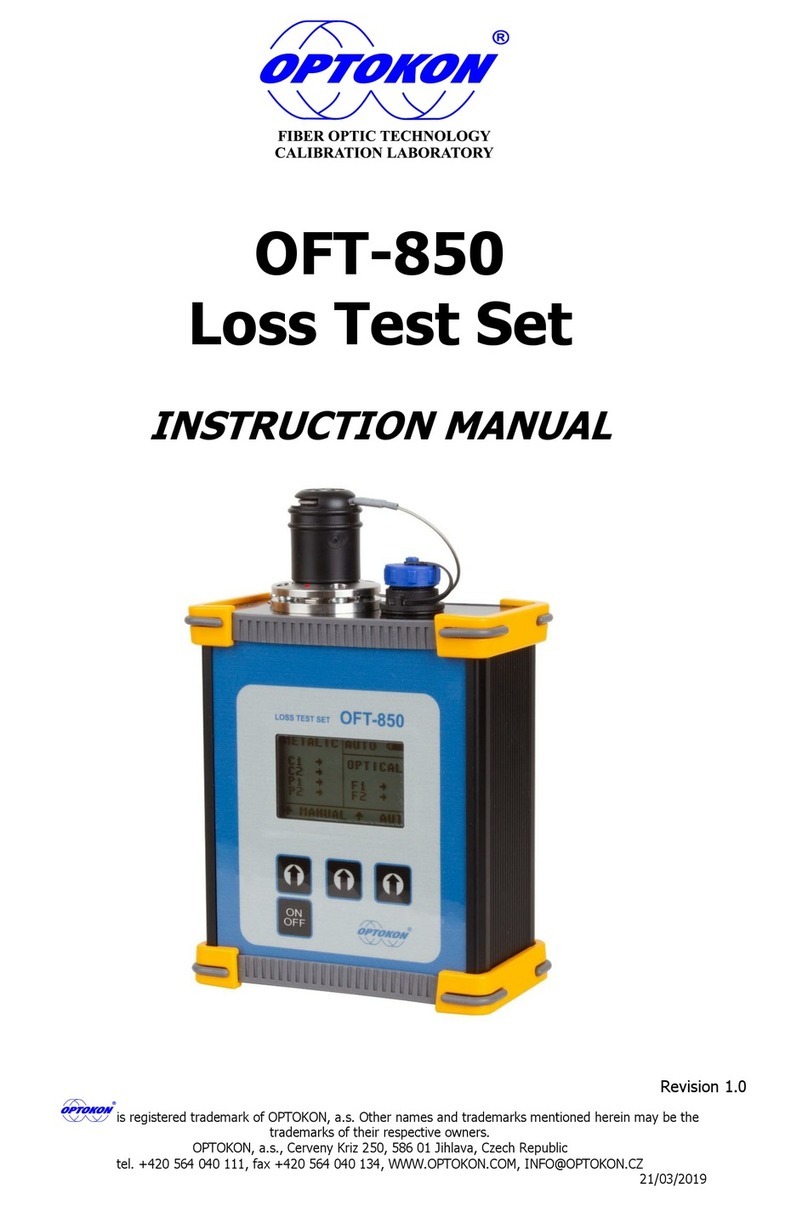
OFT-920 USER MANUAL
- 3 -
Content
1Introduction.................................................................................................. 4
2Features........................................................................................................6
3Application ....................................................................................................6
4Accessories ...................................................................................................6
4.1 Standard........................................................................................................................6
4.2 Options:........................................................................................................................6
5Specifications ................................................................................................7
5.1 Light Source.................................................................................................................7
5.2 Power Meter.................................................................................................................7
5.3 Loss Test Set ................................................................................................................7
6Safety information......................................................................................... 8
7Maintenance.................................................................................................. 9
7.1 Battery care and replacement.......................................................................................9
7.2 Instrument care...........................................................................................................11
7.3 Optical connector care................................................................................................11
8Button function description........................................................................... 12
8.1 Menu #1 .....................................................................................................................13
8.2 Menu #2 .....................................................................................................................14
8.3 Menu #3 .....................................................................................................................15
8.4 Menu #4 .....................................................................................................................16
8.5 Menu #5 .....................................................................................................................17
SAVE RESULT ...................................................................................................................17
LOAD RESULT...................................................................................................................17
UPLOAD MEMORY...........................................................................................................18
9Measuring loss............................................................................................. 19
9.1 Basic theory................................................................................................................19
9.2 Method 6 - two instruments .......................................................................................20
9.2.1 Setting the reference .........................................................................................20
9.2.2 Measuring Loss.................................................................................................21
9.3 Method 6 - one instrument.........................................................................................22
9.3.1 Setting the reference .........................................................................................22
9.3.2 Measuring Loss.................................................................................................23
9.4 Method 7 - two instruments .......................................................................................24
9.4.1 Setting the reference .........................................................................................24
9.4.2 Measuring Loss.................................................................................................25
9.5 Method 7 - one instrument.........................................................................................26
9.5.1 Setting the reference .........................................................................................26
9.5.2 Measuring Loss.................................................................................................27
10 Ordering information .............................................................................. 28
10. Setting up data transfer.......................................................................... 29
11. Power loss and decibels.......................................................................... 32
12. Notes..................................................................................................... 33
13. Calibration, service center....................................................................... 36





























